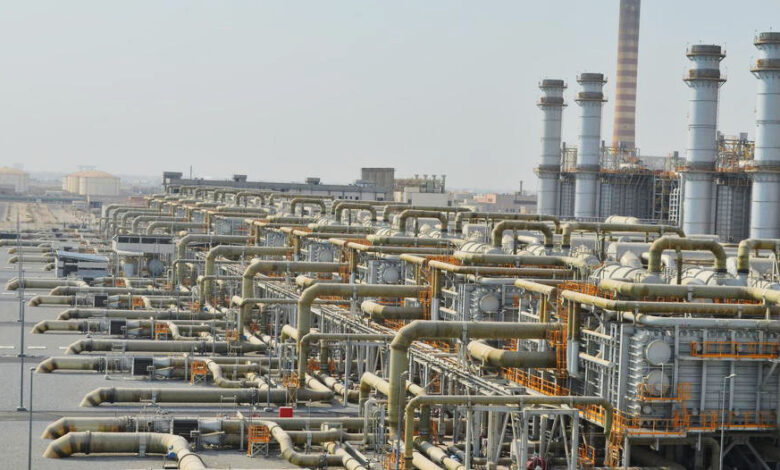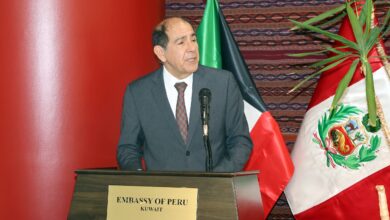Rationalizing water use to ensure sustainable future

In recent years, uncharacteristically high summer temperatures have decreased availability of freshwater in many places, with disastrous impact on the lives and livelihood of people there. In Kuwait, record high temperatures over the past many summers have only worsened the country’s limited natural water supplies, even as unsustainable water consumption patterns, growing population, and rapid rates of urbanization and industrialization have increased water usage.
Kuwait is among the most water-stressed countries in the world, characterized by an arid climate, scant rainfall, no surface water, and dwindling groundwater resources. Despite the scarce natural freshwater resources, the per capita daily water consumption in Kuwait, estimated at 450 liters per person, is not only among the highest in the world but also nearly three times the global average of around 150 liters per person per day.
More than 90 percent of the potable water needs in the country are met by eight desalination plants, while the limited agricultural areas are irrigated by groundwater, treated waste-water, and desalinated water mixed with brackish water. Globally, agriculture accounts for roughly 70 percent of global freshwater withdrawals, followed by industry at 20 percent, and municipality (domestic) withdrawals at 10 percent.
Contrary to the global trend, studies on water consumption reveal that more than 44 percent of freshwater withdrawals in Kuwait are for domestic use. One major reason for this excessive consumption is government subsidies that cover over 90 percent of water production costs, resulting in one of the lowest global water tariffs. This encourages unbridled water consumption and strains water supplies.
Records from the Ministry of Electricity, Water, and Renewable Energy (MEWRE) shows that in 2023, during peak summer in mid-August, consumption of water at 507 million imperial gallons or 2.3 million cubic meters per day (MCM/d) exceeded the total production of 478 million imperial gallons (2.2 MCM/d). The shortfall was met from the strategic reserves, which stood at 3,767 million imperial gallons (17 MCM). Predicted higher temperatures in future are only likely to exacerbate and repeat such shortages.
While the combined installed capacity of Kuwait’’s desalination plants is around 3.1 MCM/d, the actual output is far short of this installed capacity. Any extended plant-maintenance shutdowns or other major production disruptions could further imbalance the fragile water supply mechanism. A study in 2022 by the civil-society organization, Kuwait Water Association (KCA), showed that demand for water could surge 20 to 30 percent by 2030, due to an increase in per capita usage and a rise in gross demand for water.
The KCA estimated that this would necessitate the building of a new desalination plant with a capacity of 100 million gallons every five years at a then projected cost of KD450 million each. Without significantly curbing individual consumption, the policy of building more desalination plants to meet freshwater demand is fraught with risks, not least of which is higher costs.
In addition to increased expenditures on production and transmission infrastructure, there are also higher expenses associated with energy (mainly oil and gas) needed to operate the desalination plants. Currently, nearly 55 percent of total energy consumption in the country goes towards desalination and power production processes. Costs associated with operating, transmitting, and distributing water are also projected to increase in future.
In addition, when computing expenses involved in expanding the desalination process, we need to factor the negative impact to the marine environment from the thermal brine discharged by desalination plants, as well as the deleterious effect on human health from the air pollution related to burning fossil fuels to desalinate water. We clearly need to switch to more sustainable forms of desalination.
On a positive note, there is growing awareness among the public in Kuwait about the fragility of the water ecosystem, and the need to sustain water resources by tackling environmental degradation and rationalizing consumption. Recently, the Swiss Embassy in Kuwait, in partnership with UN-Habitat, hosted an interactive discussion on sustainable water.
The event brought together representatives from Kuwait Institute for Scientific Research (KISR), Kuwait Foundation for Advancement of Sciences (KFAS), academia, government bodies, private sector, diplomats, and civil-society organizations, to discuss critical water challenges and explore solutions for sustainable water management.
Considering sustainable use of water is pivotal to Kuwait’s future, the discussions centered on the importance of integrated water resource management, innovative technologies, and cross-sector collaboration. The event also provided stakeholders with a platform to exchange perspectives, foster partnerships, and examine solutions tailored to the region’s water challenges.
A recent report from the US-based Center for Research on the Epidemiology of Disasters (CRED) warns of increased economic and human costs from more frequent, intense and destructive floods and droughts as a result of global warming and climate change in future. Given the financial, economic and environmental costs linked to building new desalination plants, and rising repercussions from climate change, it is evident that Kuwait’s water woes are only likely to intensify in future.
According to the latest report from the global non-profit organization, World Resources Institute (WRI), Kuwait is among 25 countries that face high water stress each year. High water stressed nations are those withdrawing 40 to 80 percent of their renewable water supplies annually. The WRI report reveals that the Middle East and North Africa (MENA) region remains the most water-stressed area on Earth, with 12 out of 17 most water-stressed countries, including Bahrain, Qatar, Oman and Kuwait, located in this region.
Experts categorize regions as water stressed when annual renewable water per person is below 1700 m3; when available water drops below 1000 m3, the region is said to be experiencing water scarcity; and when water availability falls below 500 m3, the area is said to be in absolute water scarcity. The WRI findings on MENA are corroborated by a new study by the World Bank, which projects that annual water availability per capita in MENA will decrease by 2030 to around 500 cubic meters (m3) per person per year.
The World Bank noted that by 2050, an additional 25 billion cubic meters of water will be needed annually to meet the needs of MENA region. “This is equivalent to establishing another 65 desalination plants, each the size of Ras Al-Khair plant in Saudi Arabia, which is currently the world’s largest plant,” said the Bank, indicating the infeasibility of such a prospect. Globally, around four billion people, or half the world’s population, are currently exposed to water stress for at least one month a year; by 2050, that number could be closer to 60 percent of the global population.
The Bank emphasized that growing risks from environmental repercussions of climate change further underscore the urgent need for long-term strategies to safeguard ecosystems, secure resources, and build resilience. “Water management is not just about scarcity, pollution, or infrastructure, but about governance and cooperation. The challenge is not only to ensure water access but to manage it effectively, by aligning efforts of users, providers, and regulators,”said the Bank.
Safe drinking water is a human right and a major socio-economic driver for billions of people worldwide, water is also pivotal to progress on the UN Sustainable Development Goals. Through efficient interventions, including more investment in water infrastructure and resources, better water governance, and rationalized use, we can ensure sustained freshwater availability and accessibility in the years ahead.
In Kuwait, it is becoming increasingly imperative that we implement sustainable water production methods, as well as conserve water and rationalize its usage so as to ensure continued prosperity and stability of the nation and welfare of its people.













